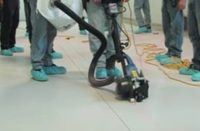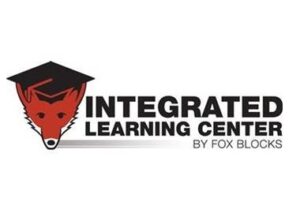I can recall attending decorative concrete training seminars and demos years ago and leaving all pumped up after learning new techniques. The techniques and materials of today are many times more attractive, as advancements and talent collide to make true artistic expression. Each new issue of Concrete Decor magazine amazes me still, when I see works of art on a canvas of concrete.
But what if I told you it’s not good enough to be a well-trained decorative artist? The cold truth is that our industry has seen its share of truly talented decorative concrete individuals fail, and it’s not because they weren’t good at their craft. Today’s artisans must be more than talented — they must be capable of overlaying talent with an entrepreneurial spirit.
Sometime over the last couple of years, I realized that the decorative concrete industry had surpassed my individual talents. This neither upsets nor shocks me, since I completely saw it coming when the decorative industry gained its respected spot within the construction industry. My company chose to adapt by focusing on a few types of decorative services and products, making sure we could accomplish two goals with them: produce high-quality work consistently and produce quality work profitably. We realized early on that achieving one without the other would eventually add our name to a long list of starving artists.
Many readers are registering for one of the biggest training opportunities in decorative concrete history, the next Concrete Decor Show, down in San Antonio in February. I have no doubt Bent Mikkelsen and his team will provide the best cutting-edge training by respected leaders within our industry. But the fact remains that it will be up to you to find creative ways to turn this information and training into a well-respected and profitable extension of your business. I want to point out a few ways you can make your training dollars and time well-spent.
Prior to the housing correction, a decorative concrete company could attempt a risky move or two and come out fine. Those days are long gone. Working capital is thin and mistakes are not something those in our industry can afford. New training is wise but perspective is necessary. It was once okay to participate in training seminars focused only on steps and fundamentals — this is no longer the case. Each minute spent in training must be from a new perspective. How can you take this new product or procedure, implement it in a cost-effective manner and spit out quality and profit at the end?
Our company yard in California has a pile of sample products that producers have sent us over the years to try because of my time writing for Concrete Decor and designing and installing decorative concrete on TV. I’m sure most of the products are great, but to be honest, most didn’t meet our criteria, not because they weren’t good but because they were not practical. They simply did not fit with our company’s plan to produce quality yet profitable projects according to our market. Your perspective must be similar if prosperity is part of your plan.
So the question is, how do you know if a product or technique is a good fit for you? Ask yourself what’s hot in your local market. What are your customers, builders and architects asking about the most? What may be hot in Texas might not fit the taste of your local market.
Trends seem to start from east and west, working inward toward the heartland. Do you know what the trend is in Florida, Texas or California? Will this decorative trend work in your market? Are you signed up for training in a decorative market that’s growing or dying? Is there a reliable supplier in your area? Are the techniques too complex or costly for you to expand into?
A few years ago our company scrambled to replace a failed decorative color supplier. We interviewed two companies, finally picking one over the other. You know why we picked the one we did? It had nothing to do with price, nothing to do with availability. One color supplier offered pastel-style colors when our market taste was mostly earth tones. Did we want to risk the time and money to redirect our local market? Not a chance. Ask yourself if your local market’s taste will like the technique you’re spending time and money to learn.
The speakers and trainers in San Antonio are experienced. Otherwise, they wouldn’t be there. Ask them tough questions related to implementation, marketing, costs and ideas. What have they seen work? What type of jobs? What hasn’t worked? (There’s no reason to reinvent the decorative wheel.) Does anyone offer one-on-one training in your marketplace? Is the speaker or trainer available as a consultant?
I recall a conversation years ago at World of Concrete, back when all of us were considering a new type of decorative concrete called the overlay. A supplier had a huge corner booth with several talented salespeople answering several questions at a time. I noticed this young guy standing in the back who was not dressed like the other salespeople. He looked really smart to me. I waved him over and asked him what he knew about this new overlay product. Come to find out he was part of the development team and had a world of information — information I used to make a decision to pass on this product. I asked one simple question: What is the failure rate of the product? He dipped his head and said 14 percent. The product everyone was flocking around like it was on sale had a failure rate of 14 percent.
What if my company would have spent thousands of dollars learning, selling, and then installing something that failed 14 percent of the time? It is your time and money being spent, so take advantage of these sources of information and knowledge by asking tough questions before investing.















